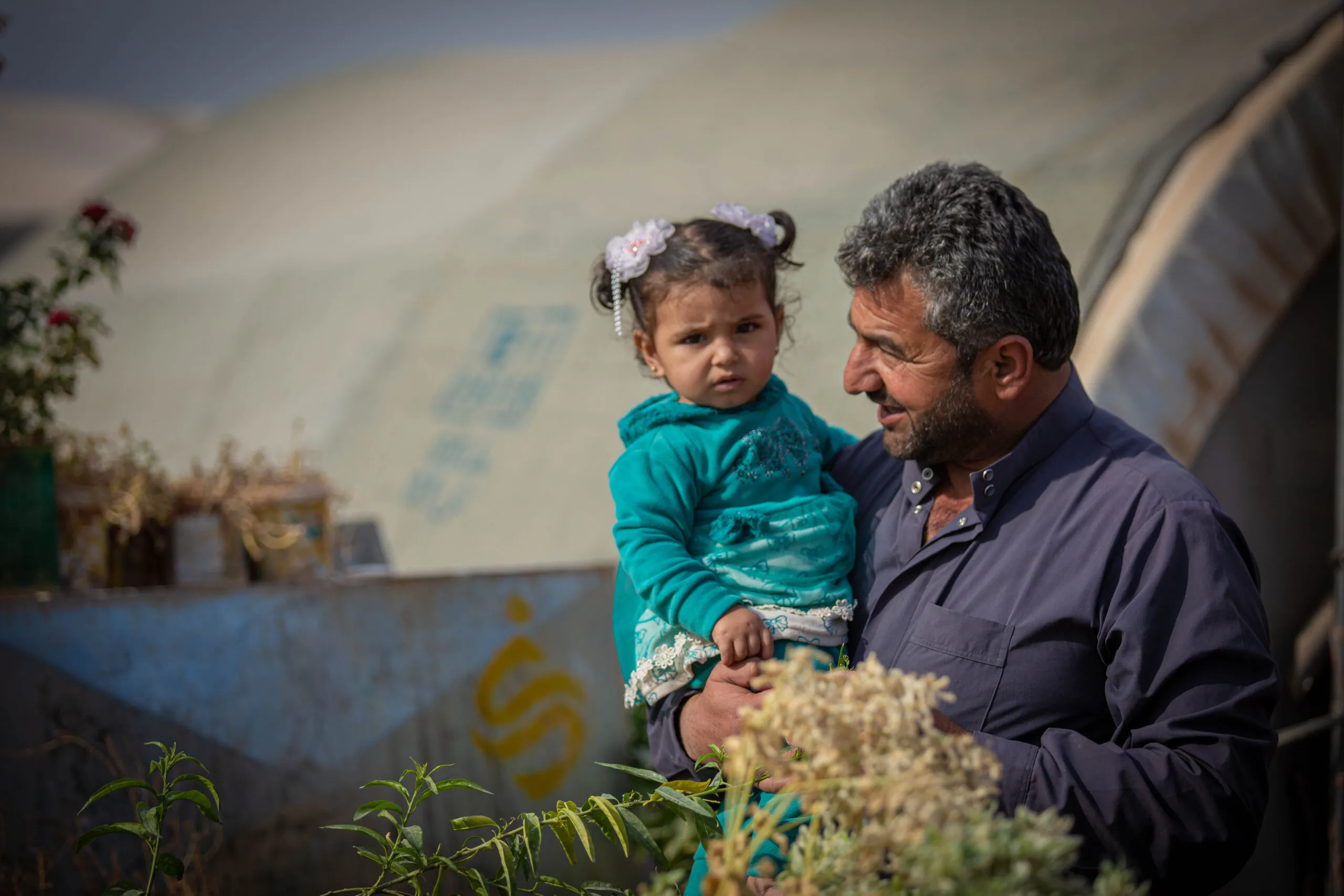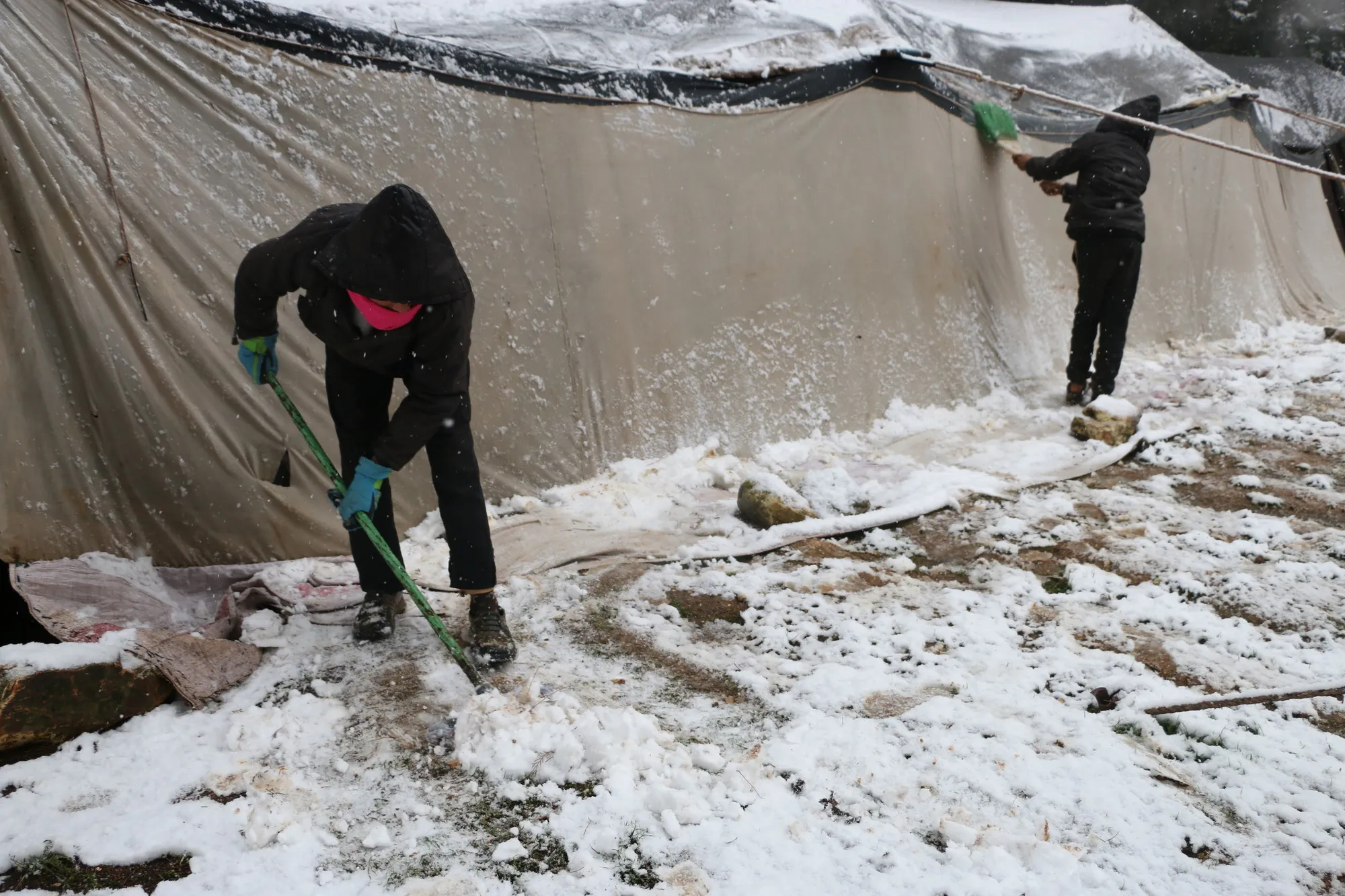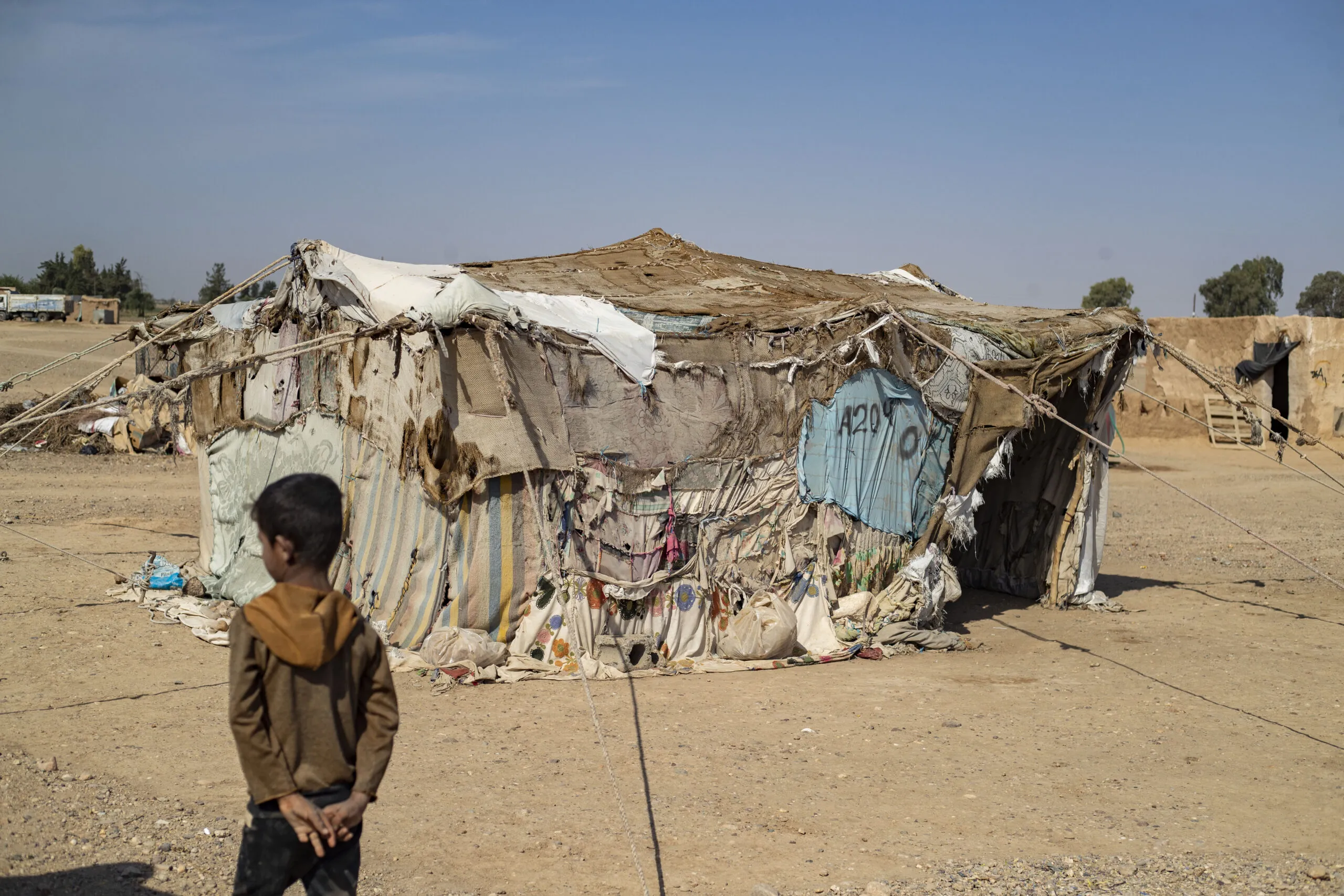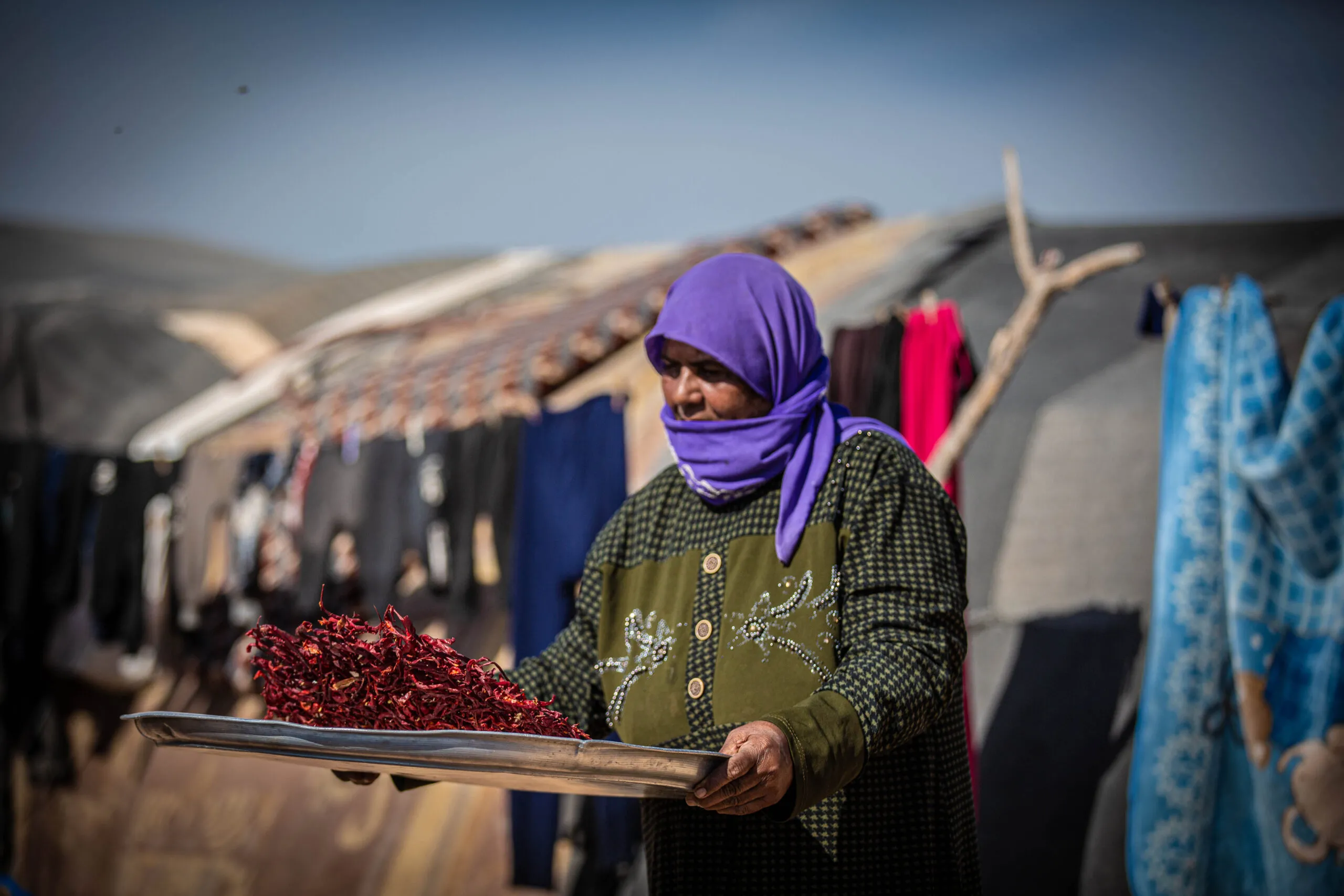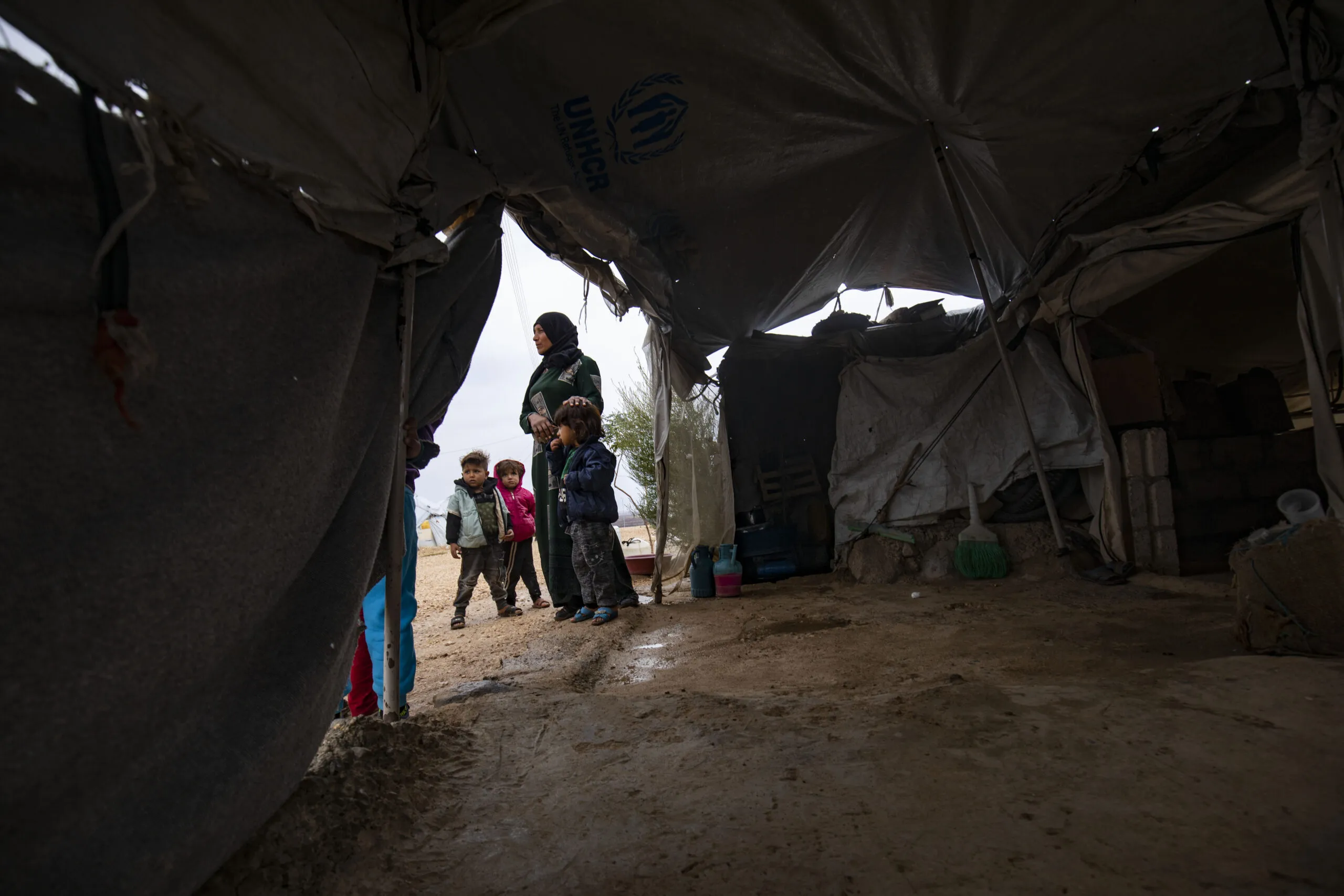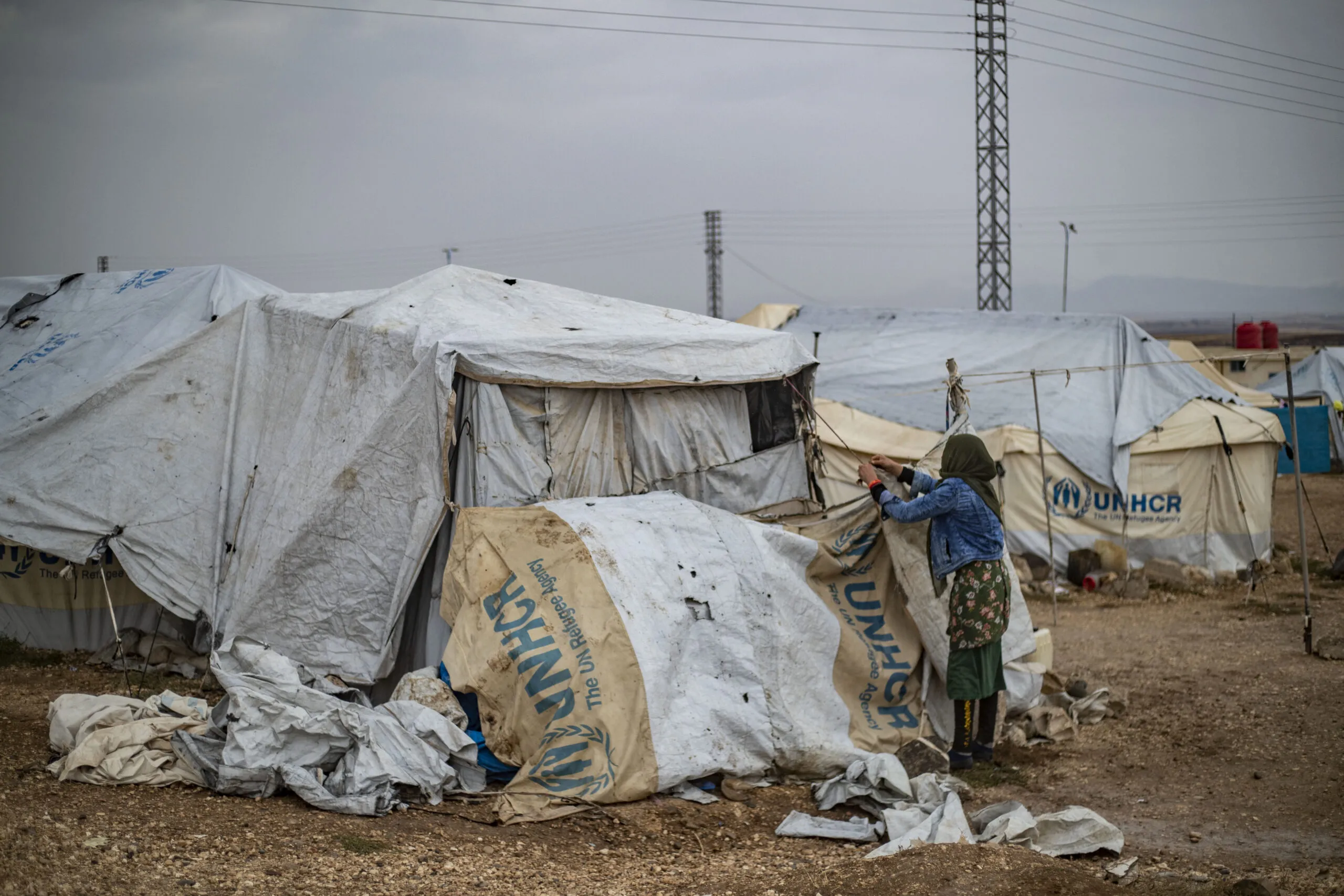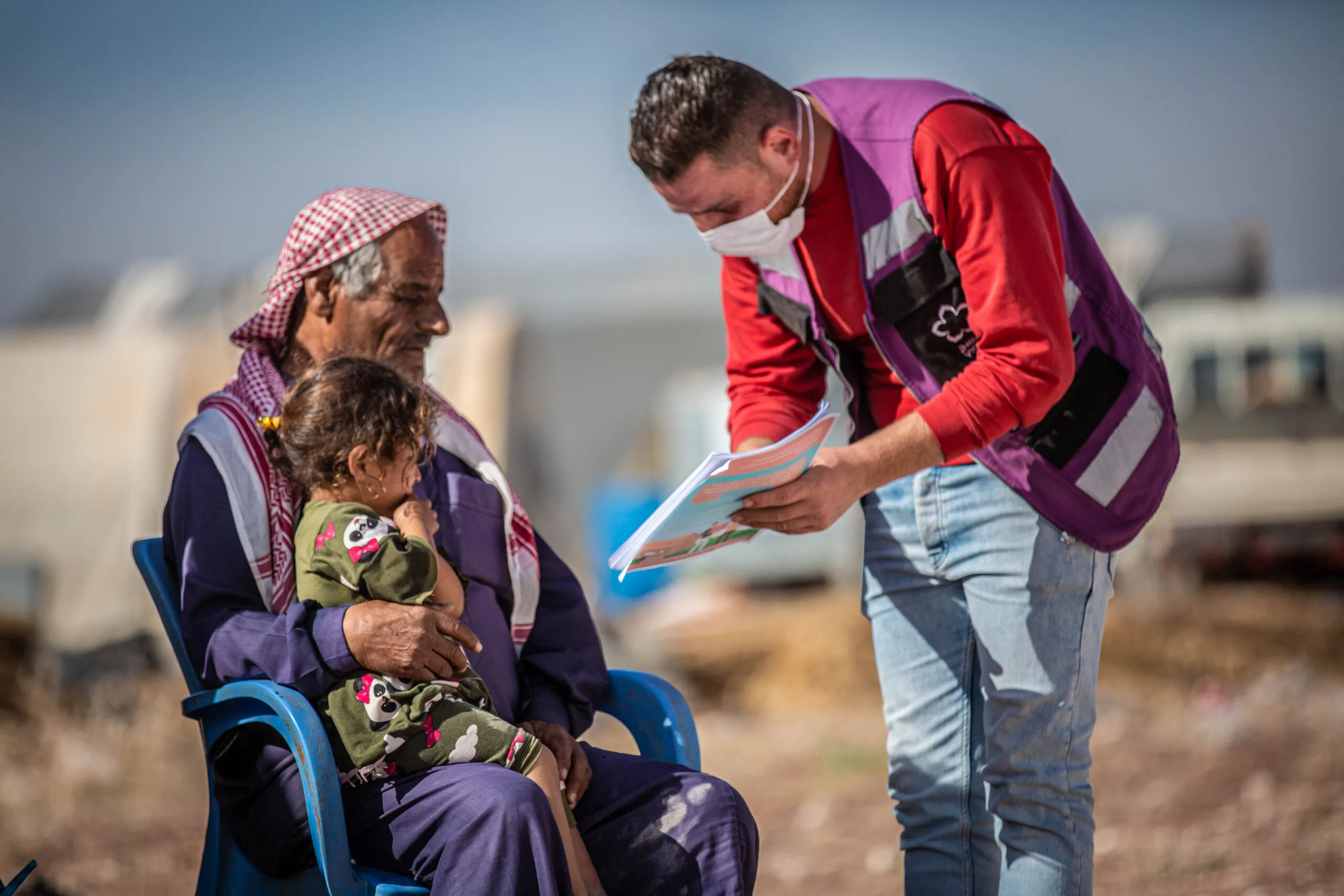Since the conflict erupted in 2011, more than 14 million Syrians have been forced to flee their homes and over 300,000 have lost their lives.
“I spent many sleepless nights in fear of a sudden bombardment,” says Ismail. “I am constantly worried about the future of my children, my wife, and my relatives.”
Ismail and his six children have been moving from one place to another in search of safety. For now, they found refuge in a camp in a small town in Idlib, northwest Syria. Hailing from the northern countryside of Hama, Ismail is one of the 100 families living in this camp.
Like Ismail, an estimated 2.9 million, just in northwest Syria, have lost their homes. The situation there has further aggravated with the most recent escalation of conflict in October 2023. The number of internally displaced people (IDPs) spiked once again with over 120,000 people displaced in just two weeks.
Across Syria, over 6.9 million people are now displaced in their own country, forced to live in numerous camps and informal settlements.

